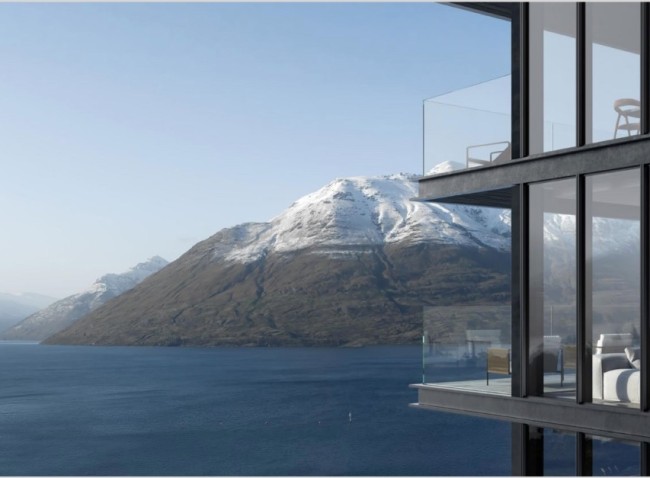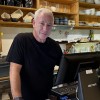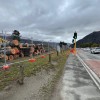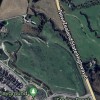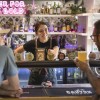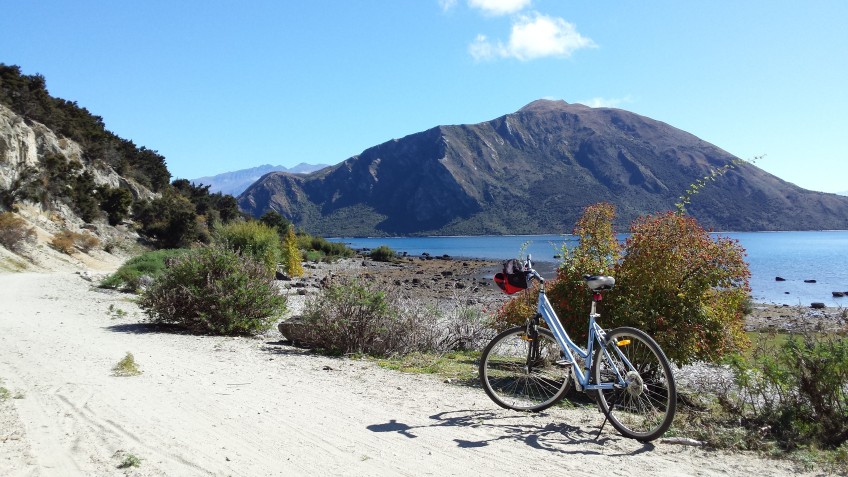
Wanaka councillors urged to "step up" to make cycling safer in town
Wanaka's Hetty Van Hale says the QLDC needs to make it safer and more appealing for people to get around by foot or bike, rather than in vehicles...
It is extremely disappointing to see the Queenstown Lakes District Council has allocated woefully little funding to active transport and the creation of future walk and cycle ways in Wanaka in the draft Ten Year Plan.
This is a myopic attitude. We have a whole generation of children growing up in our town who don’t bike to school because it’s simply not safe on our roads. And the safety factor will become even more critical when the new primary school opens in Three Parks and many children will need to cross the main state highway to get there.

Hetty Van Hale: Wanaka children don't bike to school because it's unsafe.
We are all well aware our lifestyles are becoming increasingly more sedentary. This is having severe consequences on health outcomes, increasing the risk of a range of chronic diseases. One of the easiest ways to get more physical activity back into our lives is through active transport. And there are other great benefits as well, such as easing vehicle congestion and reducing air pollution.
This is a societal issue and our council needs to take a holistic view and put people and their health and safety at the centre of their decision making. Council needs to make it easier for everyone to use cars less and walk and cycle more. We need to design our streets so that active transport can become all or part of every journey.
There is much to be learned from other parts of the world. London have adopted the Healthy Streets Approach to improve air quality, reduce congestion and make their communities greener, healthier and more attractive places to live, work, play and do business. They have drafted a plan that recognises that the best way to get more people walking and cycling is to improve the quality of the experience of being on the streets.
Major cities around the world, including Auckland, have formed the C40 Cities initiative and are committed to a vision of the future where walking, cycling and shared transport are how the majority of citizens get around their cities. We may be a small town but why shouldn’t we have a bold vision and commit to that in Wanaka too?
Auckland Transport’s business case for a proposed investment programme into cycleways of $600 million from 2018-2028 shows that every $1 invested equates to $2-$4 in benefits for society. They also expect 9000 fewer car trips per day on Auckland’s network by 2026, reducing carbon emissions by more than 13 tonnes per day. Families using one fewer car could save, on average, $10,200 every year.

Wanaka: a great place to ride a bike...except on the roads. Image: Bike Wanaka
In Portland, Oregon, the Portland Bicycle Plan for 2030 was adopted in 2010 with a vision for a healthy community, vibrant neighbourhoods…and bicycles everywhere! This plan aims for cycling to make up 25 percent of all trips three miles or less by 2030. Significant progress has already been made with cycling to work increasing from 1.1 percent in 1990 to 6.8 percent in 2011, one year after the plan was implemented.
The Wellington Cycleways Programme Masterplan aims to make Wellington a more sustainable, liveable and attractive city. In addition, it aims to improve safety for all people on bikes, and achieve greater transport network efficiency, effectiveness and resilience.
In 2014 Wellington carried out a cycling survey that showed 76 percent of residents aged 18 years and over would consider cycling if improvements were made to provide safe, separate cycling infrastructure. And trends show an increasing number of people cycling to work with a record 21 percent annual growth in cycling in Wellington between 2014-2015.
Numerous international studies also show that cycling is good for business. Businesses often resist anti-car, pro-active transport infrastructure changes - such as removing on-street parking and pedestrianisation of streets – on the basis that this will be bad for business. But often these changes result in increased retail activity. In New York a raft of changes included traffic calming, separated and protected bike lanes and dedicated bike signals. This resulted in significantly increased retail sales, beating the Manhattan average for the same period and considerably outpacing the results on nearby unaltered streets.
According to Bike Auckland, having unsafe streets for cycling is costing us in actual harm and foregone benefits. Making it easier for kids and adults to travel by bike will address these costs sooner rather than later. Just like climate change, we can continue to deny it if we like – but the data will keep coming whether we like it or not. So when are we going to act? How about now?
Come on Wanaka councillors. It’s time to step up to the plate and hit a home run. Please don’t go out on first base. Lift your eyes to the future horizon, look to the rest of the world, plan and act now to improve the future liveability, sustainability and safety of our beautiful town.
Long-time Wanaka resident Hetty Van Hale is involved with numerous organisations including the Southern Lakes Arts Festival Trust, Winter Games New Zealand, Snow Sports New Zealand and Badminton New Zealand. In the past, she’s worked with Wanaka Wastebusters, Lake Wanaka Tourism and the Mount Aspiring College Foundation. Her day job is communications manager at Infinity Investment Group.











